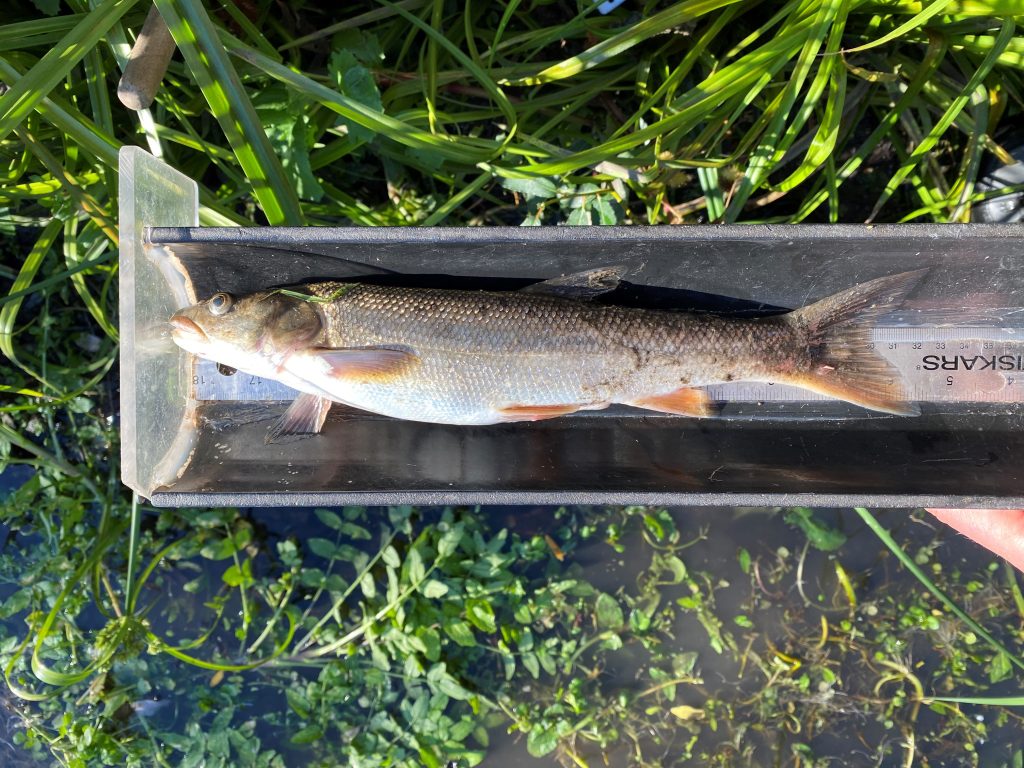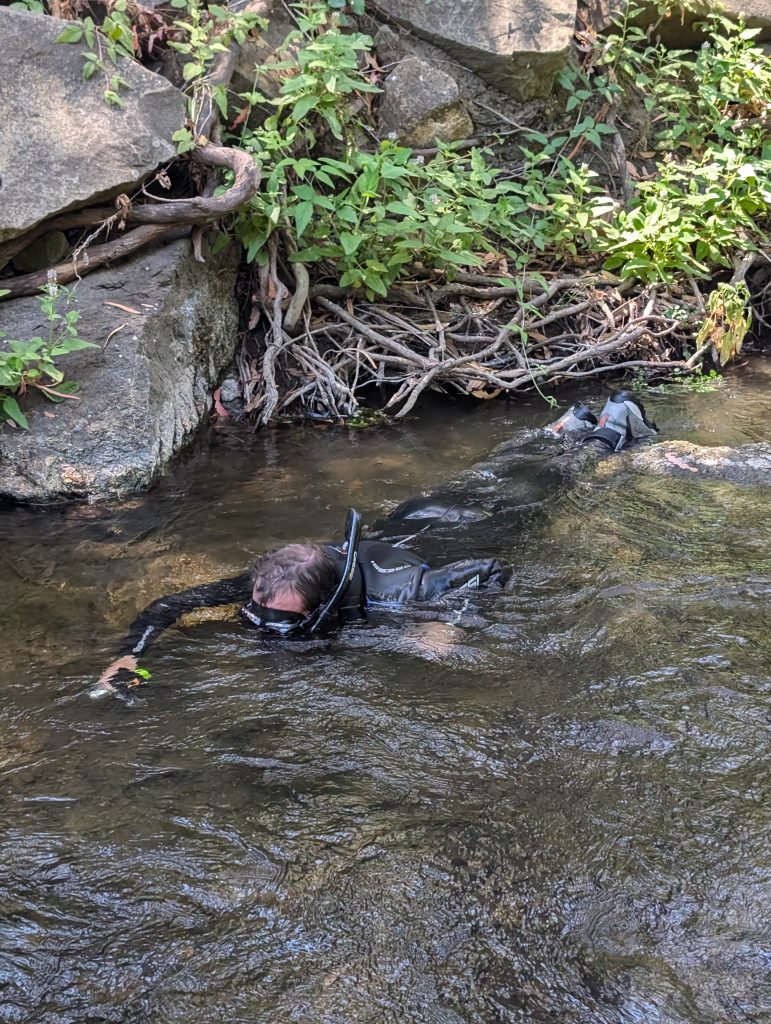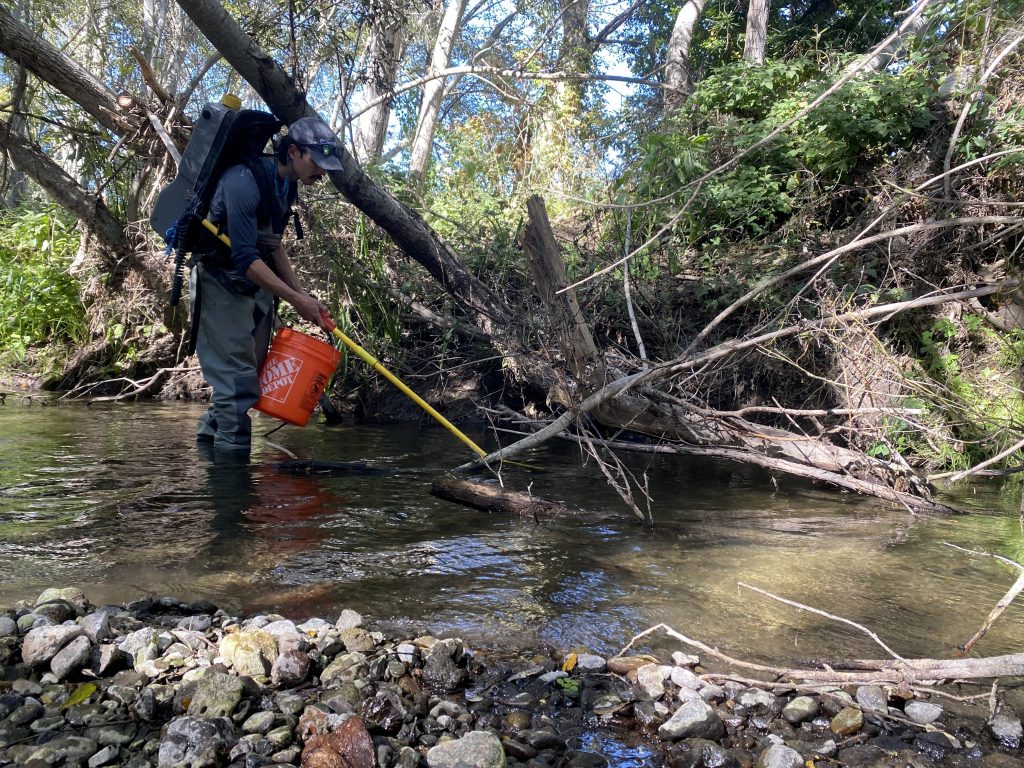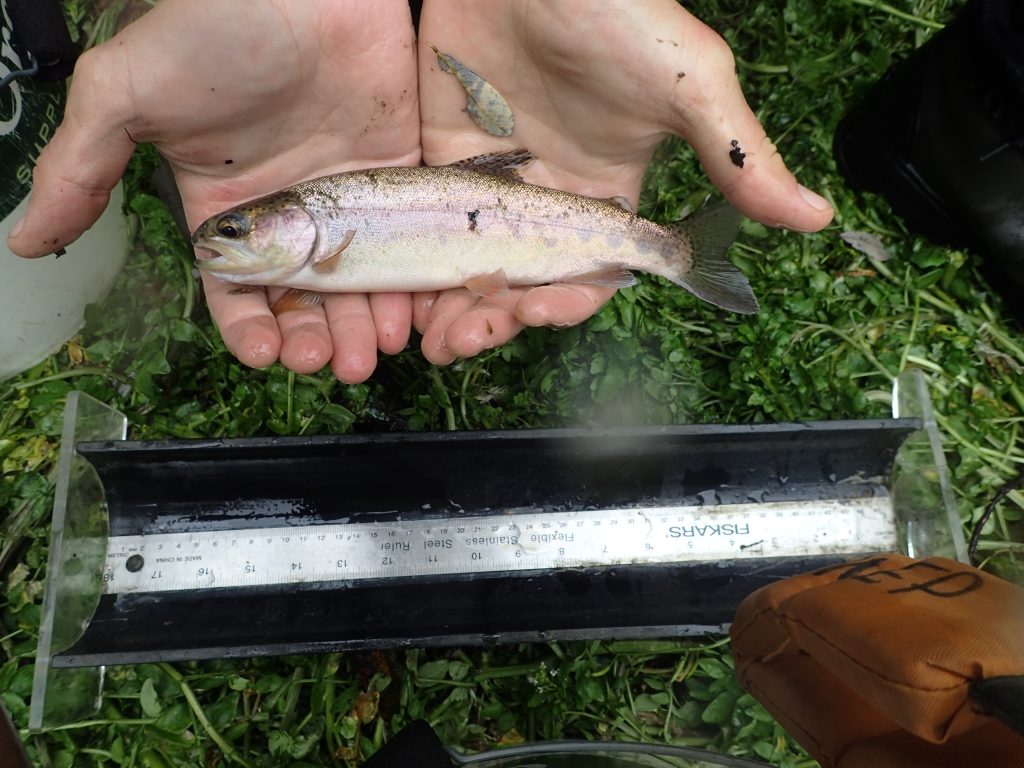Steelhead trout (Oncorhynchus mykiss), once abundant in the streams that drain into Morro Bay, are now designated as a federally threatened species due to declining numbers. Steelhead populations can be affected by a number of factors such as habitat degradation, poor water quality, and fish passage barriers. The Estuary Program and our partners work to protect steelhead in the watershed through monitoring and restoration efforts.
Non-Native Pikeminnow Management
A challenge for steelhead trout in the Chorro Creek watershed is a non-native fish called the Sacramento pikeminnow (Ptychocheilus grandis) that directly feed on juvenile steelhead and compete for habitat. Pikeminnow are native to the Sacramento River, Russian River, and some of the tributary streams that drain into Monterey Bay. They were likely introduced as bait fish into the Chorro Reservoir and eventually made their way into Chorro Creek. The Estuary Program conducted a study that concluded that each adult pikeminnow in the system could be consuming up to 40 larval steelhead per year.
To manage the pikeminnow impact on steelhead, the Estuary Program has been partnering with Stillwater Sciences and the California Conservation Corps since 2017 to remove pikeminnow from the reservoir and Chorro Creek.

How We Remove Pikeminnow and Track Native Fish
The first step for managing pikeminnow is to understand where they’re located. The Estuary Program works with the California Conservation Corps to snorkel the stream reaches and identify areas with high densities of pikeminnow. From there, they target these areas for pikeminnow removal.

The next step is to go into the creek with an electrofisher. This piece of equipment releases controlled electrical currents into the water to temporarily stun the fish and make it easy for us to collect them.

Within specific sections of Chorro Creek, we set up block nets across the creek and sampled fish with multiple passes of the electrofisher. This then allows us to track success over time and gather data on all fish present in the creek. Once fish are captured, staff identify, count, and measure them. Pikeminnow are then humanely euthanized, while other species are returned unharmed to the creek.
Improvement in Steelhead Populations
The consistent suppression efforts from 2017 through 2024 are benefiting the steelhead population in Chorro Creek. During this period, we conducted 84 days of management with a total of 2,682 pikeminnow removed. We also captured and identified 1,966 steelhead before returning them safely to the creek.
After eight years of this work, we’ve determined that steelhead density increases in areas where pikeminnow have been removed. The Chorro reservoir is now free of pikeminnow. The density of pikeminnow drops in subsequent years in areas where treatment has occurred. Unfortunately pikeminnow are still present in the upstream reaches of Chorro Creek where less effort has been spent. As a result, these areas will be a focus of future pikeminnow management work, and the Estuary Program will continue our efforts to support steelhead recovery on the Central Coast.

To learn more, visit the Estuary Program website library and search with the keyword ‘pikeminnow’. More information is also available in past blogs from 2017 and 2023.
Help us protect and restore the Morro Bay estuary!
- Donate to the Estuary Program today and support our work in the field, the lab, and beyond.
The Estuary Program is a 501(c)3 nonprofit. As a result, we depend on funding from grants and generous donors to continue our work. - Support us by purchasing estuary-themed gear from ESTERO. This locally owned and operated company donates 20% of proceeds from its Estuary clothing line and 100% of Estuary decal proceeds to the Estuary Program. Thank you, ESTERO!
- Purchase items from the Estuary Program’s store on Zazzle. Zazzle prints and ships your items, and the Estuary Program receives 10% of the proceeds.
- Subscribe to our seasonal newsletter: Between the Tides!
- We want to hear from you! Please take a few minutes to fill out this short survey about what type of events you’d like to see from the Estuary Program. We appreciate your input!